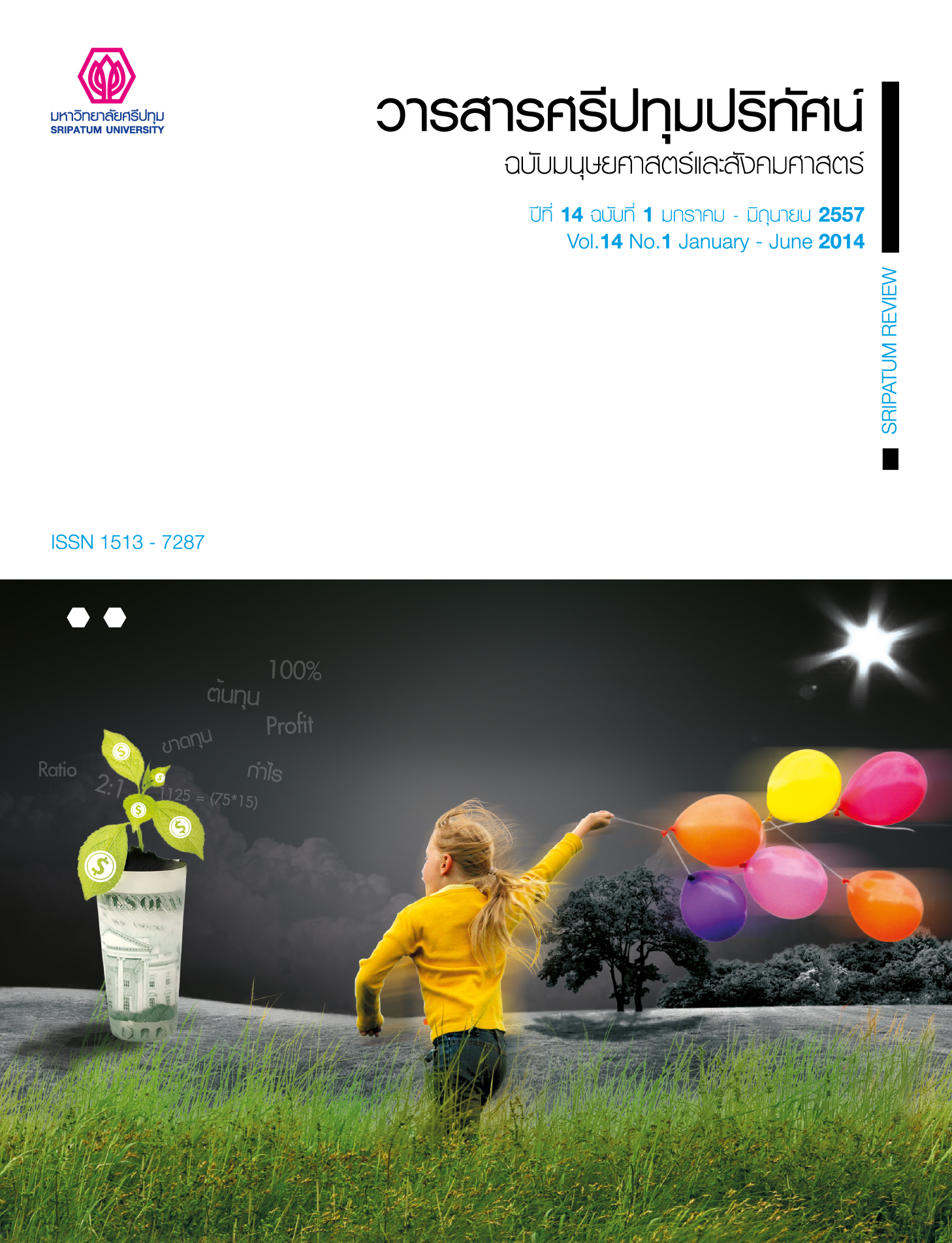A COMPARISON STUDY OF SAVING AND SPENDING BEHAVIORS OF STUDENTS FROM GOVERNMENT, RAJABHAT, AND PRIVATE UNIVERSITIES
Main Article Content
Abstract
This research aimed to compare saving behaviors, and attitudes toward saving and spending of students from state, Rajabhat and private universities. This was an exploratory study with the use of a questionnaire to collect data from 455 undergraduate students in state, Rajabhat and private universities in Bangkok metropolitan area. Chi-square test and analysis of variance were employed to analyze the data. The findings revealed that students from state and private universities did not differ in their saving behaviors. State and private university students had higher levels of saving than that of Rajabhat university students. Rajaphat university students had an attitude of indifference to money and had a positive attitude toward spending while private university students had a positive attitude toward money and becoming rich.
Article Details
1. กองบรรณาธิการสงวนสิทธิ์ในการพิจารณาและตัดสินการตีพิมพ์บทความในวารสาร
2. บทความทุกเรื่องจะได้รับการตรวจสอบทางวิชาการโดยผู้ทรงคุณวุฒิ แต่ข้อความและเนื้อหาในบทความที่ตีพิมพ์เป็นความรับผิดชอบของผู้เขียนแต่เพียงผู้เดียว มิใช่ความคิดเห็นและความรับผิดชอบของมหาวิทยาลัยศรีปทุม
3. การคัดลอกอ้างอิงต้องดำเนินการตามการปฏิบัติในหมู่นักวิชาการโดยทั่วไป และสอดคล้องกับกฎหมายที่เกี่ยวข้อง
References
พรภัทร อินทรวรวัฒน์ และคณะ. (2555). ปัจจัยและเงื่อนไขที่มีอิทธิพลต่อการออมของนักศึกษาระดับอุดมศึกษา: กรณีศึกษามหาวิทยาลัยราชภัฎสวนดุสิต. วารสารเกษตรศาสตร์ (สาขาสังคมศาสตร์), 33. หน้า 55-66.
สำนักงานคณะกรรมการการอุดมศึกษา. (2554). ข้อมูลสารสนเทศทางการศึกษา กระทรวงศึกษาธิการ.
Bandura, A. (1977). Social Learning Theory, New York: General Learning Press.
Churchill, G. A., and Moschis, G. P. (1979). Television and interpersonal influences on adolescent consumer learning. Journal of Consumer Research, 6 (1), 23-35.
Friedline, T. (2012). Predicting savings from adolescence to young adulthood: Early access to saving to savings leads to improved saving outcomes. Doctoral Dissertation: University of Pittsburgh.
Friedline, T., Elliott, W., and Nam, I. (2011). Predicting savings from adolescence to young adulthood: A propensity score approach. Journal of the Society of Social Work and Research, 2(1),13.
Furnham, A. (1999). The saving and spending habits of young people. Journal of Economic Psychology, 20, 677-697.
Hair, J. F., Anderson, R. E., Tatham, R. L., and Black, W. C. (1998). Multivariate data analysis with readings, (5th edn), Englewood Cliffs, NJ: Prentice-Hall International.
katona,G.1975. psychological economics. new york: Elsevier.
Mason, L. R., Nam, Y., Clancy, M., Kim, Y., and Loke, V. (2010). Child development accounts and saving for children’s future: Do financial incentives matter? Children and Youth Services Review, 32(11), 1570-1576.
Moschis, G. P., and Moore, R. (1984). Anticipatory consumer socialization. Academy of Marketing Science, 12 (4), 109-123.
Schindler, D. R, and Cooper, P. S. (2001). Business research methods, (7th edn). Singapore: Mc Grow-Hill.
termprasertsakul,s.,and Kulsiri,P.2011."Demography,perceived risks, desired benefits, and saving behavior of Thai consumers," International Business & Economics Research Journal , 8(7): 11-18.
Valence, G.,d'Astous, A., and Fourtier,L. 1988. "Compulsive buying Concept and measurement ." Journal of Consumer Policy, 11: 419-433.


